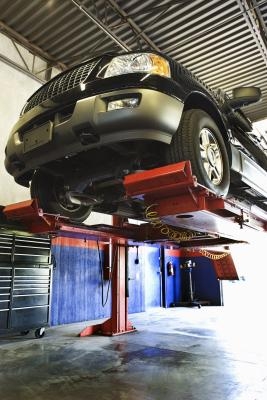
Modern internal-combustion automobile engines use a variety of different bearings. Wherever there are two dissimilar surfaces rubbing or rotating together, they are protected by a bearing. Major internal components, such as crankshafts and camshafts, do not use ball bearings, as these would not survive the pressures and conditions present inside the engine. These components use a type of solid, friction bearing. Many of the external components, however, do use ball bearings.
A bearing that is failing, or is about to fail, often will make noise. Some bearings make a "clunking" noise, and others "squeal." Noisy bearings also can indicate a lack of lubrication.
Bearings can slowly disintegrate. This allows pieces of the bearing material to circulate in the engine oil. Because bearing components are very hard, they can quickly do damage to other components, through increased wear.
When a bearing becomes worn or damaged, it often becomes loose internally. This increases the movement of whatever the bearing is attached to. The added movement of the rotating component sets up a vibration, because it is no longer balanced properly.
When a bearing is damaged to the point at which it locks up, or "freezes," its corresponding component will fail. This usually results in the locking up of the component. This can destroy other items that are attached to the component, such as drive belts and mounting brackets.